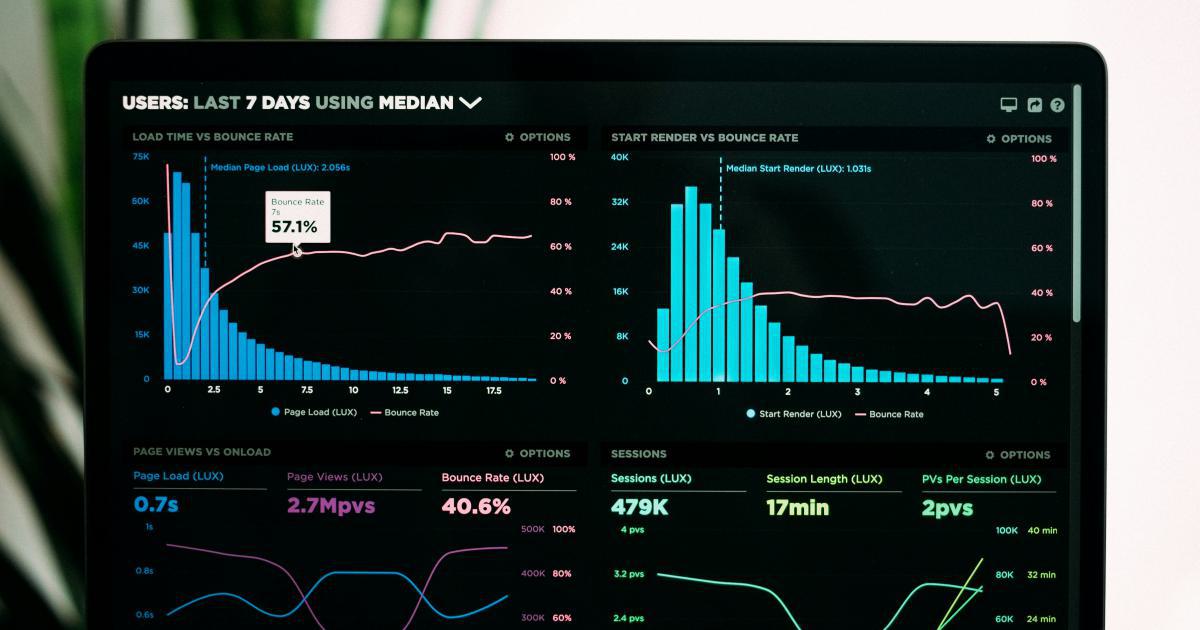How to Use Trading Journal for Performance Analysis

Trading journals are an essential tool for traders who aim to enhance their skills and achieve consistent performance in the markets. By using a trading journal for performance analysis, traders gain in-depth insights into their trading behavior, strategy effectiveness, and areas that require improvement. This comprehensive guide demystifies the process of setting up a trading journal, analyzing performance data, and using insights to refine trading strategies.
In this article, we will explore the practical aspects and benefits of maintaining a detailed trading journal for performance analysis. We will discuss what a trading journal is, why it is indispensable for traders, and how to create one tailored to your needs. Additionally, we will provide actionable tips and real-world examples to demonstrate how a structured trading journal can become the backbone of your trading success. The discussion is designed to be both informative and engaging, ensuring that by the end, you feel confident in leveraging your journal for critical performance analysis.
What Is a Trading Journal?
A trading journal is a record-keeping system where traders document every trade they make. It includes details such as entry and exit points, position sizes, risk-reward setups, and even the emotions experienced during the trade. This log serves multiple purposes:
- Performance Tracking: Allows you to assess the outcome of each trade and the overall performance over time.
- Error Analysis: Highlights mistakes in strategy or execution that can be corrected in future trades.
- Strategy Verification: Validates whether your trading plan is working as expected or needs adjustments.
- Emotional Insight: Offers an understanding of the psychological factors that drive your trading decisions.
Using a trading journal for performance analysis is more than just recording numbers; it’s about understanding the story behind each trade. With this approach, you can identify patterns that might not be apparent by merely reviewing raw data.
Why Trading Journals Matter
Trading journals provide a structured method for organizing your thoughts, decisions, and emotions in a measurable way. Let’s delve into the fundamental reasons why they are so critical:
Consistency and Accountability
A trading journal instills discipline. When you consistently record your trades, you hold yourself accountable. This record-keeping enables you to review past decisions objectively, understand the reasons behind wins and losses, and develop a routine that is aligned with your performance goals.
Performance Improvement Through Data Analysis
By analyzing your trading journal, you can pinpoint recurring mistakes and successful patterns. For instance, you might notice that trades executed during high volatility periods tend to underperform compared to those during steady market conditions. With this insight, you can modify your trading strategy to embrace setups that yield better outcomes.
Psychological Self-Assessment
Trading is as much a psychological game as it is about strategy. Documenting your emotional states during trades can reveal patterns of behavior that are detrimental to your performance. For example, if you find that impatience consistently leads to poor decisions, you can implement techniques such as mindfulness or pre-trade routines to mitigate these feelings.
Learning and Adaptation
No trader starts perfect. A trading journal serves as a personal repository of knowledge where experience can be recorded and revisited. Over time, you create a log of lessons learned from both your successes and mistakes, enabling continuous improvement in your trading methodology.
How to Set Up Your Trading Journal
Setting up a trading journal that effectively supports performance analysis requires careful planning. Whether you prefer a digital format or a physical notebook, the key is consistency in collecting data. Follow these steps to create a robust trading journal:
Step 1: Define Your Objectives
Begin by identifying what you want to achieve with your trading journal. Your goals might include:
- Recognizing recurring mistakes
- Testing and validating new strategies
- Tracking overall performance over time
- Managing and reducing trading-related stress
Clearly defined objectives help tailor the data you record and ensure that you capture useful metrics relevant to your trading style.
Step 2: Choose Your Format
There are several approaches to keeping a trading journal:
- Digital Spreadsheets: Programs like Microsoft Excel or Google Sheets allow for easy data manipulation and visualization.
- Trading Software: Many trading platforms offer built-in journaling features that automatically record your trades.
- Manual Journals: A notebook dedicated solely to journaling your trades can offer a personal touch, allowing you to jot down quick notes and insights.
Digital formats often provide the advantage of swift analytics and the use of formulas for calculation. Choose the method that best fits your workflow.
Step 3: Determine the Key Data Points
A comprehensive trading journal should include at least the following details:
- Date and time of trade
- Instrument traded (e.g., stocks, forex, commodities)
- Direction (long or short)
- Entry and exit points with timestamps
- Position size and risk/reward ratio
- Trade rationale (the thought process behind the trade)
- Outcome (profit, loss, or breakeven)
- Emotional state before, during, and after the trade
Recording qualitative data—such as notes on market conditions and personal emotions—is equally important as quantitative data. This combination provides a holistic view of each trading decision.
Step 4: Develop a Consistent Routine
The value of a trading journal is in regular entries and reviews. Implement the following best practices to ensure consistency:
- Dedicate a specific time each day to update your journal.
- Review your entries weekly to spot trends.
- Set aside time post-trading session to reflect on your performance and note any improvements or adjustments needed.
Implementing a routine ensures that your trading journal becomes an integral part of your performance analysis process.

Analyzing Your Trading Performance
One of the core benefits of maintaining a trading journal is the ability to perform thorough performance analysis. This section outlines the key steps and methods for analyzing your trading data effectively.
Calculate Key Performance Metrics
Quantitative analysis begins with calculating metrics that reveal the overall health of your trading strategy. Some essential metrics include:
- Win Rate: The percentage of trades that were profitable.
- Risk/Reward Ratio: The average profit relative to each unit of risk.
- Average Gain vs. Average Loss: Helps in understanding if your profitable trades are significantly outweighing your losing trades.
- Profit Factor: Ratio of gross profits to gross losses.
By compiling these metrics consistently in your journal, you can track your performance trends over time.
Conduct a Trade-by-Trade Analysis
Analyzing individual trades is equally important as calculating overall metrics. Address questions such as:
- What was the rationale behind entering the trade?
- Did market conditions change after the entry, and how did that affect the outcome?
- Were there any external factors (news events, economic data) that had an impact?
- How did your emotional state influence your decision-making process?
This type of granular analysis allows you to learn specific lessons from each trade.
Identify Patterns and Trends
Over time, your trading journal becomes a rich database that reveals patterns and trends. Look for commonalities in your successful trades versus those that resulted in losses. For example, you might find that trades made during specific market sessions or in certain instrument types yield better results.
It can also be useful to create visual representations of your data. Graphs and charts often make it easier to see trends that raw numbers might obscure. Many digital journaling tools provide the functionality to export data for spreadsheet software or other analytical tools.
Use the Trading Journal for Performance Analysis in Strategy Development
Integrating your analysis into your trading strategy is the final step. Use insights from your trading journal to refine your strategies:
- Optimize Entry and Exit Strategies: Modify your technical indicators or criteria based on the performance of previous trades.
- Risk Management Adjustments: If data suggests that your risk management approach is flawed, tweak your position-sizing methods or stop-loss strategies.
- Emotional Control: Recognize emotional patterns that impact your trades and implement strategies to maintain calm under pressure.
Successful traders often use their trading journal as both a diagnostic tool and a blueprint for future trading strategies.
Best Practices for Effective Performance Analysis
To maximize the benefits of a trading journal for performance analysis, consider these best practices:
Maintain Objectivity
When reviewing your trading journal, strive for objectivity. It can be challenging to face hard truths about your trading habits, but only by being honest with yourself can you improve.
Set Realistic Benchmarks
Avoid comparing your performance against unrealistic targets or market legends. Set benchmarks that align with your trading style and risk tolerance. Over time, adjust these benchmarks based on actual performance recorded in your journal.
Regular Self-Review
Periodic self-review sessions can uncover invaluable insights. Schedule weekly or monthly review sessions and focus on answering:
- Which strategies consistently outperform in various market conditions?
- What are the common psychological barriers impacting performance?
- Which trades could have been improved with better planning?
Incorporate Feedback Loops
A critical aspect of continuous improvement is the integration of feedback loops. Every review should lead to actionable changes: refining your strategy, adjusting risk management, or working on your emotional discipline.
Leverage Technology
Use technological tools to enhance your journal analysis. Many modern platforms allow you to automate data collection and analysis, generate real-time performance charts, and even provide predictive insights based on historical data trends. Tools like these not only streamline your workflow but also lift the burden of manual data computation.
Educate Yourself Continuously
The trading environment is dynamic. Continuous learning—from books, courses, or peer discussions—enables you to stay ahead of market trends and adapt your strategies. Supplementing your trading journal analysis with ongoing education ensures that your performance analysis remains current and actionable.

Real-World Examples and Case Studies
To appreciate the full potential of a trading journal, let’s examine a few real-world examples and case studies that reveal how detailed journaling has transformed trading outcomes.
Case Study 1: Transitioning from Inconsistency to Strategy Mastery
John, an active day trader, found that his trades were heavily influenced by impulsive decisions. Although his trading system had potential, his inconsistent approach led to volatile results. By maintaining a detailed trading journal, he began to track not only his entries and exits but also his emotional state during market fluctuations. Over several months, John identified that his most successful trades were executed during periods when he was calm and followed predetermined indicators. Using these insights, he adjusted his trading strategy, implemented preset exit alerts, and introduced a pre-trade meditation routine. His win rate improved, and he was able to generate more consistent returns.
Case Study 2: Refining Risk Management
Emily, a forex trader, consistently faced losses due to miscalculated risk exposure. Her trading journal contained records that showed many losses occurred when she deviated from her set stop-loss levels. By reviewing her journal, Emily discovered that her rapid reaction to market alerts led to hasty decisions. She then re-evaluated her risk management techniques and implemented automated stop-loss orders. This adjustment not only stabilized her performance but also increased her confidence in market navigation. Emily’s experience emphasizes that a trading journal is not only for recording trades but for identifying and rectifying systemic issues.
Case Study 3: Emotional Intelligence as a Trading Edge
Michael, who traded futures and commodities, noticed that his decision-making was often clouded by the fear of missing out (FOMO). His trading journal was meticulously detailed, but it wasn’t until he began to log his feelings and emotional responses that the real impact of FOMO on his trades became evident. Michael began tracking key indicators such as heart rate variability during high-stress periods and identified a clear correlation between his emotional spikes and poor trade outcomes. To address this, he integrated stress-reduction techniques and adhered more strictly to his trading plan. Michael’s performance improved as he learned to manage his emotions, underscoring the link between psychological discipline and trading success.
These examples illustrate that systematic journaling for performance analysis not only refines trading strategies but also fosters a deeper understanding of the trader’s mindset. The process of self-reflection and continuous adaptation is critical to achieving long-term success in any trading environment.
Advanced Techniques for Performance Analysis
After establishing the basics and seeing tangible results, many traders seek advanced techniques to further optimize their performance through journaling.
Correlation Analysis
Advanced traders often perform correlation analysis to determine how various factors interact with each other. For instance, you can analyze:
- The relationship between market volatility and your trade outcomes.
- How different economic indicators affect specific market segments.
- Correlations between your emotional states and the timing of market entry/exit.
By quantifying such relationships, you can adjust your trading blueprint to better align with market realities.
Statistical Methods
Incorporate statistical tools to assess the performance of your strategies:
- Use regression analysis to predict outcomes based on historical data.
- Perform hypothesis testing to validate the effectiveness of a new trading strategy before fully implementing it.
- Use standard deviation and variance to understand risk and performance consistency.
These statistical insights can empower you to make data-driven decisions, upgrading your journaling process from descriptive to predictive analysis.
Backtesting Integration
Combine your trading journal with backtesting techniques. After noting a particular trade strategy, use historical market data to simulate how it would have performed over a given period. Comparisons between the backtest results and your actual performance help you to calibrate your strategy, ensuring that adjustments are based on robust analysis rather than anecdotal evidence.
Sentiment Analysis
Leveraging modern tools, you can perform sentiment analysis on the qualitative notes in your trading journal. This involves:
- Using natural language processing (NLP) tools to identify recurring emotional cues.
- Analyzing how sentiment correlates with trade performance.
- Adjusting your trading regime when negative sentiment patterns are detected.
Sentiment analysis gives you a proactive edge in managing the psychological aspects of trading – often the most unpredictable element.
Utilizing Third-Party Tools
Various software applications now offer integration with trading journals and performance analysis systems. These might include:
- Dashboard tools that compile your journal entries into performance charts.
- Automated alerts that notify you when performance metrics fall below predetermined thresholds.
- Machine learning models that can predict market behavior based on historical journal inputs.
By embracing technology, you can enhance the depth and accuracy of your trading performance analysis.

Common Pitfalls to Avoid
While a trading journal can be invaluable, there are common pitfalls that traders must vigilantly avoid to ensure the data remains accurate and useful:
Inconsistent Data Entry
Failing to record every trade or maintaining irregular entries can result in an incomplete dataset, making trend analysis unreliable. It is crucial to commit to consistently updating your journal with every trade detail, no matter how insignificant it might seem in the moment.
Overcomplicating the Journal
Though it might seem beneficial to record every conceivable detail, overcomplicating your journal can lead to analysis paralysis. Stick to key metrics that directly influence your trading performance. Prioritize clarity and simplicity to enhance usability during reviews.
Neglecting Emotional and Qualitative Data
A major drawback in many trading journals is the lack of emphasis on emotional states and qualitative data. Quantitative data shows what happened, but qualitative insights explain why it happened. Balance both to achieve a comprehensive understanding of your trading behavior.
Confirmation Bias
When reviewing your journal, be cautious of confirmation bias—focusing only on the data that supports your preconceived notions about your performance. Objective analysis requires that you consider all data points, including those that disprove your current strategy.
Failing to Act on Insights
Recording insights without acting on them is one of the biggest missed opportunities in performance analysis. Use your journal as a living document that not only records history but also drives changes in strategy. Regularly review your performance data and make deliberate, targeted adjustments based on your analysis.
Continuous Improvement and Future Trends
The journey to mastering trading is never static, and neither should your approach to journaling be. Continuous improvement is at the heart of performance analysis, and the practices described in this guide should evolve along with market conditions and new technological advancements.
Embracing New Technologies
As analytics and machine learning tools mature, they will play a larger role in trading journal analysis. Future trading journals might automatically:
- Parse qualitative notes and extract sentiment indicators.
- Offer real-time performance predictions based on historical data.
- Integrate seamlessly with trading platforms to reduce the manual input required.
Staying informed of these trends and gradually integrating these tools can keep your journaling approach on the cutting edge.
Expanding Your Analytical Toolkit
Beyond basic statistics, traders are beginning to incorporate more sophisticated analyses, such as Monte Carlo simulations or scenario planning, to stress-test their strategies. By simulating various market conditions using historical data, you gain insights into how different trading techniques might perform, helping to build a robust and adaptive strategy.
Building a Community of Practice
Many successful traders find value in sharing their journaling experiences and insights with others. Consider joining trading communities or forums where experiences, strategies, and performance analysis techniques can be shared. This exchange of information can lead to innovative ideas and improved methodologies.
Planning for the Long Term
Finally, remember that the purpose of a trading journal is as much about long-term development as it is about daily performance. As you chart your trading history, revisit past entries to reflect on long-term trends, lessons learned, and the evolution of your trading mindset. Over time, this historical perspective can provide motivation and clarity, reminding you of your progress and the ongoing nature of personal growth in the trading world.
Conclusion and Next Steps
A well-maintained trading journal is indispensable for any trader who values systematic improvement and thoughtful reflection on their trading performance. By integrating detailed record-keeping with regular performance analysis, you can identify both strengths and weaknesses, refine your strategies, and ultimately navigate market uncertainties with greater confidence.
To recap, the process begins with understanding what a trading journal is and embracing its value through meticulous record-keeping. With clearly defined objectives and a consistent routine, you can harness the power of detailed data to perform deep insights into your trading performance. Advanced analytical techniques, combined with a continuous commitment to self-improvement, ensure that your journal evolves into a dynamic resource for achieving peak trading performance.
For traders eager to transition from reactive decision-making to proactive strategy refinement, the trading journal for performance analysis offers a proven framework. Reflect on the examples and techniques discussed, implement the actionable strategies, and remember that the journey toward mastery is built on continuous learning and adaptation. Your trading journal is more than a log—it’s a reflection of your growth, a repository of wisdom, and a blueprint for future success.
Take the next steps by setting up or revising your current trading journal. Make a commitment today to be thorough and honest in your assessments, and you will soon see the transformative impact of your analytical efforts on your trading performance.
In summary, the art of trading lies not only in spotting opportunities but also in learning from every decision made. A meticulously curated trading journal will guide you in honing your strategy, managing risk, and ultimately achieving a sustained edge in the market.
Happy Trading and may your performance analysis always lead to smarter, more informed decisions!
Unleash the Power of Automated Trading Analysis
Are you struggling to keep up with the fast-paced trading world? TrendSpider empowers you with cutting-edge tools for optimal strategy execution.
Our automated technical analysis suite eliminates guesswork, backtests strategies, and delivers real-time alerts, saving you valuable time and effort.
Sophia Dekkers
52 posts written





